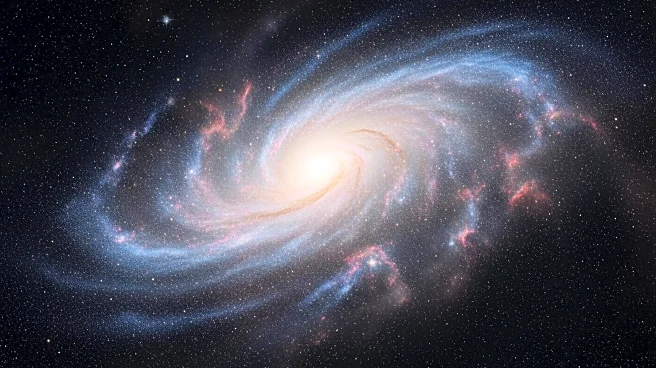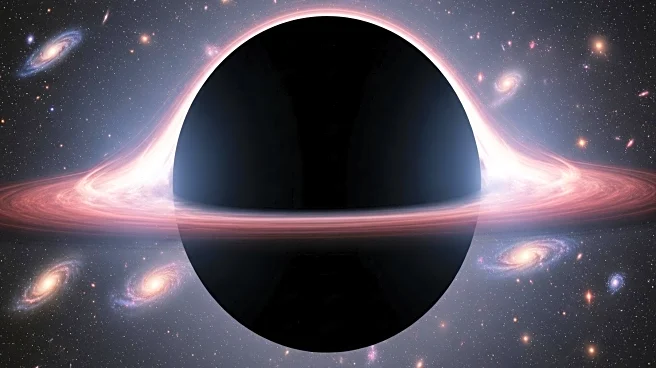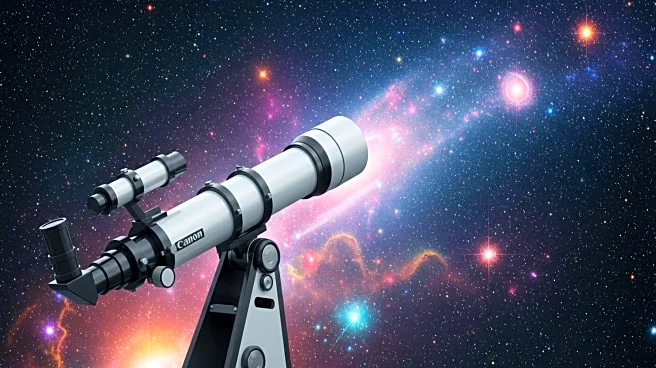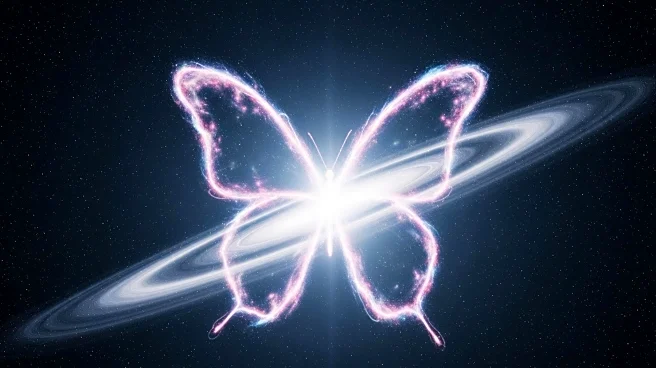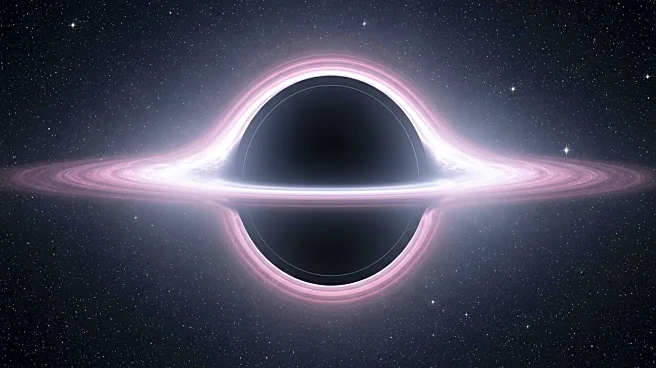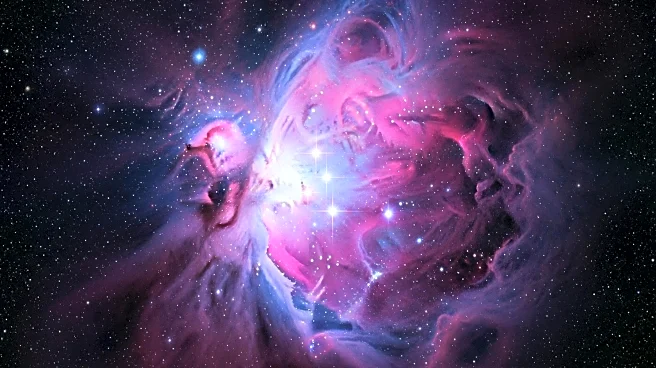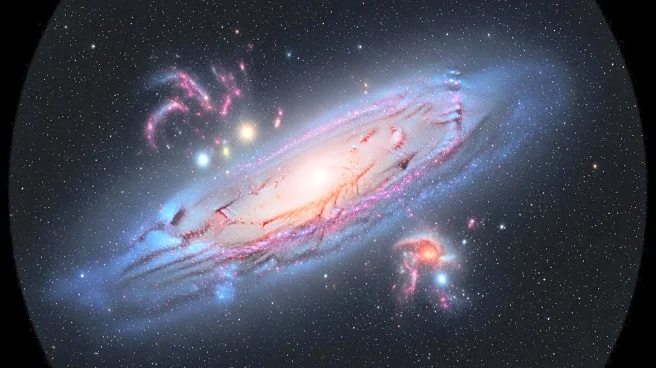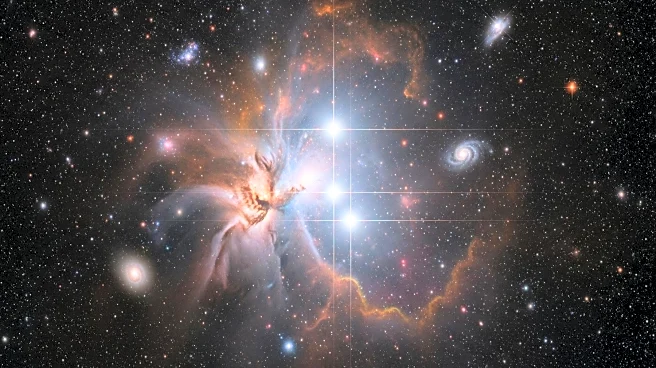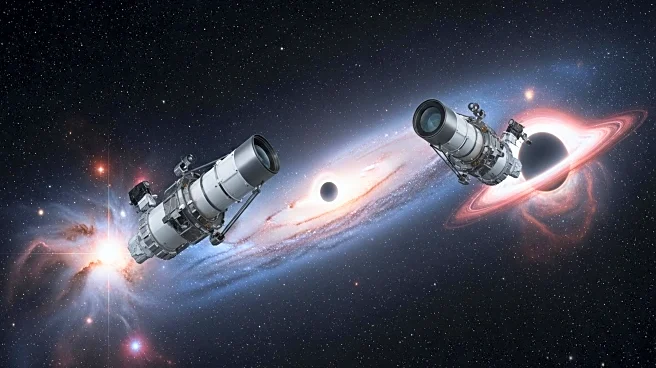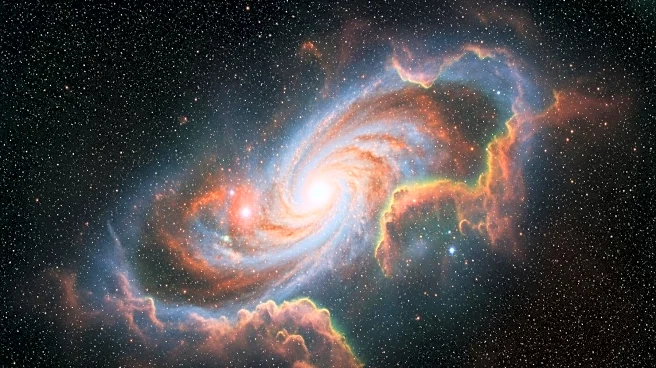What's Happening?
Astronomers using the James Webb Space Telescope have discovered dust particles traveling far from their home galaxy, Makani, surviving harsh cosmic conditions. The dust originates from intense star formation bursts in Makani, which generated powerful galactic winds. These winds propelled gas and dust into the galaxy's circumgalactic medium. The study detected polycyclic aromatic hydrocarbons (PAHs) on dust grains, indicating how dust behaves in a galaxy's environment. Despite encountering high temperatures, much of the dust survived, likely protected by cooler gas pockets. This discovery provides insights into the life cycle of galaxies and cosmic recycling.
Why It's Important?
The survival of dust particles in extreme conditions challenges existing theories about galactic evolution and material recycling. Understanding how dust travels and survives in galaxies can provide insights into star formation and the distribution of cosmic materials. This research enhances our knowledge of galaxy dynamics and the processes that fuel future generations of stars. It also contributes to the broader understanding of cosmic recycling, which is crucial for predicting the future behavior of galaxies. The findings may influence astrophysical models and theories, impacting scientific research and technological advancements.
What's Next?
Future research may focus on detecting dust in the vast spaces between galaxies, tracing its journey over millions of light-years. This could reveal how far galactic material can travel and provide further insights into cosmic recycling. Scientists may also explore the survival mechanisms of dust particles, such as cloud-wind mixing, to understand their resilience in harsh environments. The study opens new avenues for research on galaxy evolution and material distribution, potentially leading to breakthroughs in astrophysics. Observations from the James Webb Space Telescope will continue to play a crucial role in advancing this field.
